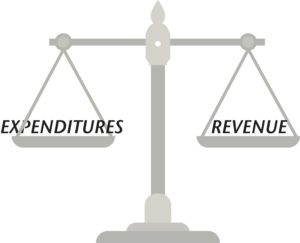Labor Department Finalizes Rule Expanding Non-ACA Compliant Association Health Plans
Critical Consumer Protections Missing, Potentially Impacting Affordability of Other Plans
On June 19, the Employee Benefits Security Administration of the U.S. Department of Labor (DOL) announced a final rule on Association Health Plans (AHPs), finalizing the DOL’s proposed rule released on January 5, 2018. AHPs allow groups of small business to band together and purchase health care plans for their employees. The rule exempts these association plans from some of the requirements of the ACA. It allows plans to be sold that do not provide a minimal level of health care services so they may be cheaper and attract healthier people. This in turn could make the ACA compliant plans more expensive if they have more people who require health care services in their risk pools. This rule will undermine the Affordable Care Act (ACA) and the critical consumer protections the ACA provided to people with disabilities and chronic health conditions.
Before the ACA became law, it was extremely difficult for people with pre-existing conditions to purchase affordable and comprehensive health insurance in the individual and small group market. Finalizing this rule and other actions by the Administration signal a return to unaffordable and skimpy health insurance and a corresponding increase in the cost of ACA compliant health plans. The following are specific concerns with the AHP final rule:
- Incomplete Coverage of Essential Health Benefits (EHBs) – These plans would not be subject to the ACA’s requirement to cover all ten categories of EHBs. They could exclude coverage for mental health, substance abuse services, and rehabilitative and habilitative services and devices and other essential health benefits. People with disabilities and chronic health conditions rely on these basic health care services to maintain their health and function.
- Purchasing Confusion – Unlike other plans, AHPs are not required to adhere to the ACA’s consumer protections. This causes confusion among Americans about which types of plans will cover the services they need. Consumers could unknowingly purchase plans that could leave them underinsured if they become ill or need medical care.
- Higher Premiums Based on Age and Gender – AHPs cannot charge higher premiums based on health status, but they do allow AHPs to base premiums on age and gender. This means women and older workers could end up saddled with higher out-of-pocket costs.
- Undermined Risk Pool – AHPs are likely to attract younger, healthier workers away from the individual and small group marketplaces. This skewing of the risk pool will force these marketplace plans to raise premiums on comprehensive plans, increasing costs for people with disabilities and older Americans. It will leave AHP enrollees with bare bones benefit packages that are more likely to fail to meet their needs when needed most.
- History and Risk of Fraud – AHPs have a history of fraudulent operation in which unauthorized health insurance companies fail to comply with regulation, collect premiums for nonexistent insurance, fail to pay claims, and leave patients with hefty medical bills. AHPs expanded under the final rule could cause a new wave of fraud, leaving people with disabilities vulnerable to ending up uninsured.
The Arc will continue to analyze the impact of health care rulemaking on people with disabilities and chronic health conditions and respond to changes that negatively impact people with disabilities.




 My home state of Illinois still has seven state-run institutions for people with intellectual and developmental disabilities (IDD) open. In 2018, 37 states still have institutions where people with IDD live institutional lives away from their families and communities. Some may recall the horrible investigative reports that showed the terrible conditions in institutions, but fail to realize that they still exist — and that state and federal government dollars are still funding them. The Arc of the United States was founded by families like mine trying to eliminate the need for those institutions, and to get their family members with disabilities back home and included in their communities. While we have come a long way, there is still much to do from state capitals to DC.
My home state of Illinois still has seven state-run institutions for people with intellectual and developmental disabilities (IDD) open. In 2018, 37 states still have institutions where people with IDD live institutional lives away from their families and communities. Some may recall the horrible investigative reports that showed the terrible conditions in institutions, but fail to realize that they still exist — and that state and federal government dollars are still funding them. The Arc of the United States was founded by families like mine trying to eliminate the need for those institutions, and to get their family members with disabilities back home and included in their communities. While we have come a long way, there is still much to do from state capitals to DC. A balanced budget amendment is a proposed federal constitutional rule requiring that the government not spend more than its income in a given year. Most state constitutions have balanced-budget provisions and most of these make an exception for times of war or national emergency, or allow the legislature to suspend the rule by a supermajority vote. The U.S. Constitution does not require a balanced budget. Some members of Congress are looking to change that by passing legislation to add an amendment to the U.S. Constitution.
A balanced budget amendment is a proposed federal constitutional rule requiring that the government not spend more than its income in a given year. Most state constitutions have balanced-budget provisions and most of these make an exception for times of war or national emergency, or allow the legislature to suspend the rule by a supermajority vote. The U.S. Constitution does not require a balanced budget. Some members of Congress are looking to change that by passing legislation to add an amendment to the U.S. Constitution. The House and Senate bills reduce federal revenue by about $1.5 trillion over 10 years. Members of Congress have acknowledged that passing these tax cuts will make it easier to justify spending cuts down the road. The Congressional Budget Office (CBO) also notes that automatic spending cuts may be triggered if Congress does not act to prevent them. These automatic cuts could mean a $25 billion dollar cut to Medicare in 2018. Automatic spending cuts could also slash funds that go to states to operate critical programs such as the Vocational Rehabilitation state grant program and the Social Services Block Grant.
The House and Senate bills reduce federal revenue by about $1.5 trillion over 10 years. Members of Congress have acknowledged that passing these tax cuts will make it easier to justify spending cuts down the road. The Congressional Budget Office (CBO) also notes that automatic spending cuts may be triggered if Congress does not act to prevent them. These automatic cuts could mean a $25 billion dollar cut to Medicare in 2018. Automatic spending cuts could also slash funds that go to states to operate critical programs such as the Vocational Rehabilitation state grant program and the Social Services Block Grant. This year’s Congressional budget process is particularly important for people with disabilities and their families. The recently-passed House and Senate fiscal year 2018 budgets set overall spending and revenue targets for the next 10 years. But beyond this basic function, Congressional budget writers have been clear that an underlying goal of the 2018 budget is to set the stage for a massive tax cut bill. The Arc is concerned that significant loss of federal revenue will result in cuts to programs for people with disabilities
This year’s Congressional budget process is particularly important for people with disabilities and their families. The recently-passed House and Senate fiscal year 2018 budgets set overall spending and revenue targets for the next 10 years. But beyond this basic function, Congressional budget writers have been clear that an underlying goal of the 2018 budget is to set the stage for a massive tax cut bill. The Arc is concerned that significant loss of federal revenue will result in cuts to programs for people with disabilities






